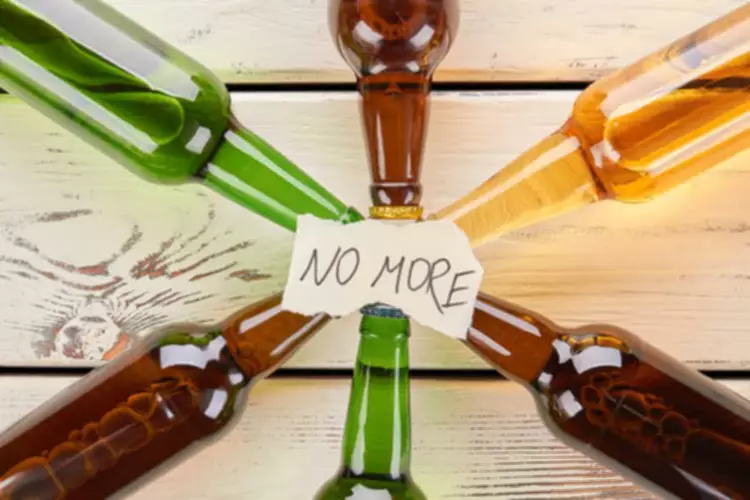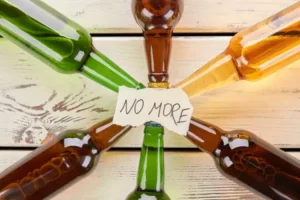
These sobriety medallions can vary in design but will often note the date of sobriety, as well as inspirational symbols or messages. A graduate of Texas Tech University and the University of Cincinnati, Trent is fervently dedicated to providing evidence-based, compassionate care to those battling addiction. He emphasizes a holistic, patient-centered approach and stays updated on the latest in addiction research. From hanging plants to succulents, this gift is a great visual way to mark the time passing. Cities, where you’ll be walking around a lot and seeing different cultural sights, are also a good option. In the United States, more than 17 million people suffer from alcohol abuse or dependence.
Year Sobriety Gift
There are many items like mugs and clothing out there for your sober loved one that can help to promote their sobriety. Many people in recovery are proud of the progress that they have made and aren’t afraid to show it off, for people like this, these types of sobriety gifts are perfect. With that said, there are others who like to live a more private lifestyle and don’t like everyone to know their history and, for these people, it is best to avoid these gifts. Personalized and sentimental addiction recovery gifts remind your loved one that their journey is valued, recognized, and supported. They celebrate personal milestones, acknowledge hard work, and create lasting memories of the strong support system they have around them.
What NOT to Say to Someone in Recovery
Thoughtful, supportive gifts for someone in recovery demonstrate that you recognize their journey, encouraging them every step of the way. This guide offers a variety of ideas to help you make a positive impact on your loved one’s path to wellness. Giving a plant as a one-year sober gift can be the start of a beautiful tradition. Each year, on the anniversary of your loved one’s sobriety, you can give them an additional plant and watch as their collection grows. One of the best things about being sober is getting to be present for moments that you always experienced through the haze of alcohol.
Personalized sobriety bracelet – engraved with a sobriety date or inspirational words

You know your loved one, you know what they like, you can find a book that aligns with their interests. This could be sci-fi, history books, self-help books or something else, there are literally millions of options available to you. With that said, sometimes you may not know what they will like best, when this is the case, you can always give them a gift card to a bookstore such as Barnes and Noble. If you’re looking for more ways to support your loved one’s recovery journey, contact us today to learn how we can help. They can be given to anyone who supports someone on their journey to sobriety. These gifts serve as a reminder of the importance of staying sober and living a healthy life.
What is a Good Sobriety Gift?
Even if you have failed previously and relapsed, or are in the middle of a difficult crisis, we stand ready to support you. Our trusted behavioral health specialists will not give up on you. When you feel ready or just want someone to speak to about therapy alternatives to change your life call us. Even if we cannot assist you, we will lead you to wherever you can get support. Your resting heart rate is a good measure of your overall fitness, and your heart rate while exercising can tell you how effective your workout is! This is perfect for men in recovery and trying to do healthy activities.

Sobriety Gifts: Gifts to Celebrate Sobriety
Giving gifts for sobriety is a common way to honor a friend or family member who has worked hard on their journey to recovery and substance abuse treatment. If you’ve supported a friend or family member through their journey to recovery from addiction, you are probably excited to celebrate their sobriety. While you know your loved one best, it’s better to have a list of sobriety gifts you may choose from. In keeping with the 12-Step philosophy of “one day at a time,” another thoughtful sober anniversary gift could be a book of daily affirmations.
- This could be sci-fi, history books, self-help books or something else, there are literally millions of options available to you.
- Giving a book as a one-year sober gift may not seem that exciting, but you have to consider it as more than a thing.
- Shop confidently with SOBRLIFE knowing that your payment and shipping details are in safe hands.
- The FHE Health team is committed to providing accurate information that adheres to the highest standards of writing.
- For those looking for inspiration and pride, SOBRLIFE and Hope Fiend also have sobriety-themed hats and beanies.
A sobriety anniversary is an opportunity to show your loved one how proud you are and that you support them. To make sure you honor their wishes, consider asking them how they want to celebrate this milestone. It’s essential to consider your loved one’s tastes when sending gifts, but remember that rehab facilities come with their own sets of rules and regulations.
These gifts for people in recovery can play a key role in helping them manage cravings and maintain sobriety. Selecting a thoughtful gift for someone in addiction recovery can be a powerful way to show your support and encouragement. The right gift can promote healing, inspire new hobbies, and help celebrate milestones without triggering memories of past challenges. A one-year sober gift is a great way to show the sober person in your life that you recognize their hard work and are proud of their accomplishment.

The enthusiastic feedback highlights the significant impact that sober clothes can have on boosting confidence and allowing for self-expression. Choose from a selection that includes hoodies, tee shirts, hats, beanies, and more, all designed to celebrate the journey of recovery. It’s a powerful tool for mental health and a way to acknowledge the hard work and dedication put into achieving sobriety. If you’re ready to take the first step on your road to recovery, we’re here for you. Please book an appointment with us today, and let’s get you back to where you want to be. It is a nice touch to add a personalized message on the front page of the diary to let the person know how proud you are of their achievement.

- Depending on how long your friend’s treatment is, he will be away from home for a little while and may experience some homesickness or even maybe nervousness about coming home.
- Sobriety gifts for him could be self-made or purchased from inspirational-themed stores.
- A one-year sober gift is a great way to show the sober person in your life that you recognize their hard work and are proud of their accomplishment.
- Maybe your loved one would prefer to spend some quality time with you rather than receiving a standard gift.
- If you don’t want a full cake, you could make or pick up some cupcakes to celebrate a loved one’s sobriety.
Help your friend or family member get up each day and live with inspiration by gifting them a book of daily affirmations. These positive notions can uplift them when they are having a hard time or encourage them to keep going strong in their sobriety. Daily reminders to stay present, build confidence and think positively can be a great way to support a friend in recovery. It’s an opportunity to reflect, celebrate and appreciate sobriety gifts the journey of recovery.



